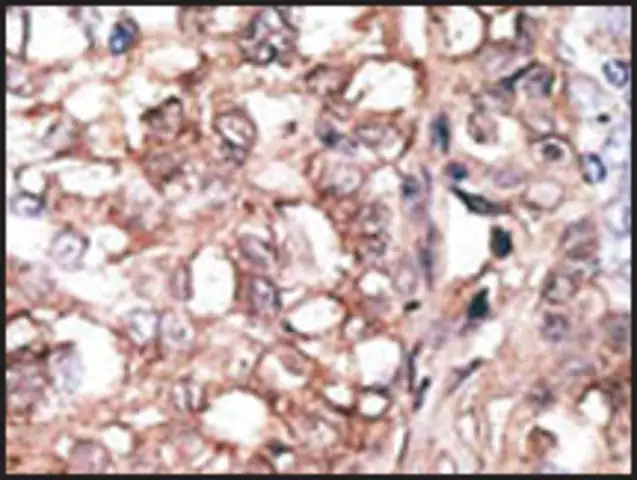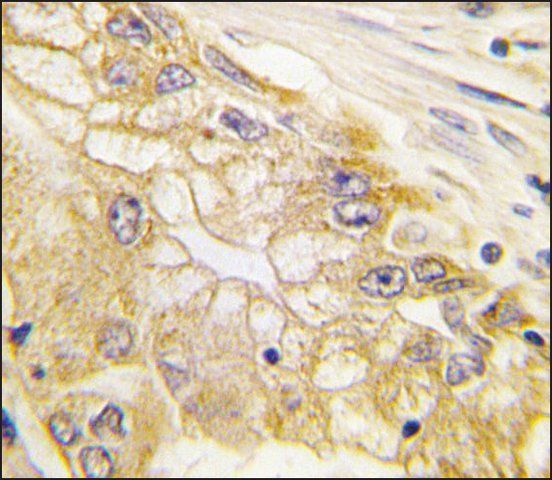您的位置:首页 > 产品中心 > Anti-Mouse Tlr1 (C-term) antibody produced in rabbit
Anti-Mouse Tlr1 (C-term) antibody produced in rabbit

| 产品编号: | 3377739 |
| 规格: | IgG fraction of antiserum, buffered aqueous solution |
| 包装规格: | 100 μG |
| 产品类别: | 进口试剂 |
| 品牌: | Sigma-Aldrich |
| 优惠价: | 立即咨询 |
产品别名
Anti-Mouse Tlr1 (C-term) antibody produced in rabbit
Anti-Toll/interleukin-1 receptor-like, CD281
基本信息
| NACRES | NA.41 |
| General description【一般描述】 | Higher animals establish host defense by orchestrating innate and adaptive immunity. This is mediated by professional antigen presenting cells, i.e. dendritic cells (DCs). DCs can incorporate pathogens, produce a variety of cytokines, maturate, and present pathogen-derived peptides to T cells, thereby inducing T cell activation and differentiation. These responses are triggered by microbial recognition through type I transmembrane proteins, Toll-like receptors (TLRs) on DCs. TLRs consist of ten members and each TLR is involved in recognizing a variety of microorganism-derived molecular structures. TLR ligands include cell wall components, proteins, nucleic acids, and synthetic chemical compounds, all of which can activate DCs as immune adjuvants. Each TLR can activate DCs in a similar, but distinct manner. For example, TLRs can be divided into subgroups according to their type I interferon (IFN) inducing ability. TLR2 cannot induce IFN-alpha or IFN-beta, but TLR4 can lead to IFN-beta production. Meanwhile, TLR3, TLR7, and TLR9 can induce both IFN-alpha and IFN-beta. Recent evidences suggest that cytoplamic adapters for TLRs are especially crucial for this functional heterogeneity. This antibody is generated from rabbits immunized with a KLH conjugated synthetic peptide selected from the C-terminal region of mouse TLR1. The TLR1 gene is mapped to human chromosome 4p14. Tlr1 is widely expressed in several leukocytes and cells of myeloid lineage including monocytes, macrophages, and dendritic cells. |
| Immunogen【免疫原】 | TLR1 (Q9EPQ1, 769-805) This antibody is generated from rabbits immunized with a KLH conjugated synthetic peptide selected from the C-terminal region of mouse TLR1. |
| Biochem/physiol Actions【生化/生理作用】 | The members of the TLR (toll-like receptor) family play important role in host-pathogen interaction by identifying specific molecular patterns in various microorganisms during early innate immune response. The immune and inflammatory responses against microbial infection or tissue injury is controlled by Tlrs by initiating signal cascades and in turn, promoting the secretion of cytokines and chemokines. Tlr1 might be involved in the regulation of mucosal immune response in gut, by forming a heterodimer with Tlr2. Apart from immune cells, TLRs are also expressed on tumor cells and stromal cells. The functional role of Tlr1 is not well understood, therefore, further elucidation is required for clarity over its underlying mechanism. |
| Physical form【外形】 | Purified polyclonal antibody supplied in PBS with 0.09% (W/V) sodium azide. |
产品性质
| biological source【生物来源】 | rabbit |
| Quality Level【质量水平】 | 200 |
| conjugate【偶联物】 | unconjugated |
| antibody form【抗体形式】 | IgG fraction of antiserum |
| antibody product type | primary antibodies |
| clone【克隆】 | polyclonal |
| form【形式】 | buffered aqueous solution |
| species reactivity | mouse |
| technique(s) | immunohistochemistry: 1:50-1:100 indirect ELISA: 1:1000 western blot: 1:100-1:500 |
| NCBI accession no.【NCBI登记号】 | NP_003254 |
| UniProt accession no.【UniProt登记号】 | Q9EPQ1 |
| shipped in【运输】 | dry ice |
| storage temp.【储存温度】 | −20℃ |
安全信息
| Storage Class Code【储存分类代码】 | 12 - Non Combustible Liquids |
| WGK | nwg |






